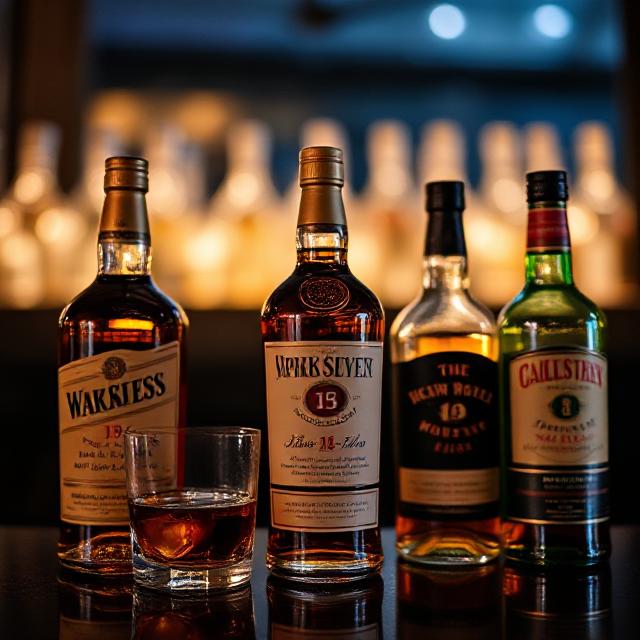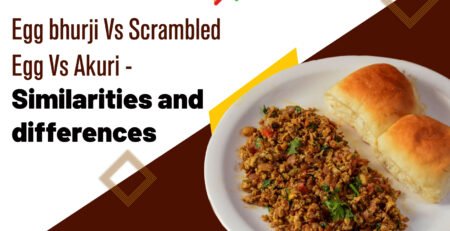The Ultimate Guide to India’s Best Whisky Brands: Health, Price, and Quality Analysis for 2025
Introduction: India’s Whisky Revolution
India stands as the world’s largest whisky consuming nation, with nearly one in two bottles of whisky sold globally finding its way to Indian consumers. This remarkable statistic reflects not just the sheer volume of consumption but also the sophisticated palate Indian whisky enthusiasts have developed over the decades. The Indian whisky market has evolved from being dominated by molasses-based spirits to embracing premium single malts and international brands, creating a diverse landscape that caters to every taste and budget.
The question of which whisky brand reigns supreme in India is complex, involving considerations of taste, price, health implications, and daily consumption patterns. Modern Indian consumers are increasingly health-conscious, seeking spirits that offer not just exceptional flavor but also potential wellness benefits when consumed responsibly. This comprehensive guide explores the best whisky brands available in India, analyzing their health aspects, pricing structures, and suitability for regular consumption.
Understanding Whisky Types and Health Considerations
The Health Dimension of Whisky Consumption
When discussing whisky and health, it’s crucial to understand that any brand is good for your health if taken in prescribed quantity (i.e 44ml a day). Medical research has identified several potential health benefits associated with moderate whisky consumption, making it more than just a recreational beverage for many Indians.
According to multiple studies, a glass of whisky a day can help reduce your risk of heart disease and heart failure. The mechanism behind this benefit lies in whisky’s ability to raise “good cholesterol” levels in the blood, providing natural protection against cardiovascular diseases. This is particularly relevant for Indian consumers, given the country’s rising rates of heart disease and lifestyle-related health issues.
Studies show lower rates of the common cold, faster removal of bacteria, and better antibody response in people who have a daily drink compared to those who don’t. The antioxidants present in whisky, particularly those derived from the oak aging process, contribute to these immune system benefits.
Malt vs. Grain: Understanding the Difference
The distinction between malt and grain whisky is fundamental to understanding quality and health implications. Single malt whiskies, made exclusively from malted barley, generally contain higher concentrations of beneficial compounds compared to grain whiskies. The wood lignans tannins and ellagic acid pulled into the whisky is what is good, and these compounds are more prevalent in single malts due to their longer aging processes and oak barrel interactions.
Indian single malts have gained international recognition, with Indian single malts finally overtaking their imported counterparts and commanding a jaw-dropping 53% of the premium whisky market. This shift reflects both improved quality and growing consumer awareness of malt whisky’s superior characteristics.
Top Indian Whisky Brands: Comprehensive Analysis
Premium Single Malt Category
Amrut Single Malt Amrut stands as India’s pioneering single malt brand, establishing the country’s reputation on the global whisky stage. Produced in Bangalore, Amrut single malts benefit from India’s tropical climate, which accelerates the aging process and creates unique flavor profiles. The brand offers excellent value for money in the premium segment, with prices ranging from ₹3,000 to ₹8,000 depending on the expression.
From a health perspective, Amrut’s single malts contain high levels of antioxidants due to their oak aging process. The brand’s commitment to using locally sourced barley and traditional distillation methods ensures minimal chemical additives, making it suitable for daily consumption within recommended limits.
Paul John Single Malt Paul John has rapidly gained recognition as one of India’s finest single malt producers. Based in Goa, the distillery combines traditional Scottish techniques with Indian innovation. The brand’s expressions, particularly the Paul John Bold and Paul John Brilliance, offer complex flavor profiles that rival international competitors.
The health benefits of Paul John single malts are enhanced by their use of Indian six-row barley, which contains higher protein content than traditional two-row barley. This translates to increased amino acid content, potentially offering additional nutritional benefits for regular consumers.
Rampur Single Malt Rampur represents the heritage of Indian whisky making, with roots tracing back to 1943. The brand’s single malts are produced in the foothills of the Himalayas, benefiting from pristine water sources and unique climatic conditions. Rampur’s commitment to traditional methods and premium ingredients makes it an excellent choice for health-conscious consumers.
The brand’s signature expression, Rampur Asava, undergoes a unique finishing process in Indian Cabernet Sauvignon barrels, adding layers of complexity and antioxidants from the wine barrel interaction.
Premium Blended Whisky Category
Royal Challenge Royal Challenge remains one of India’s most popular premium blended whiskies, offering consistent quality at accessible prices. The brand’s success lies in its careful blending of malt and grain whiskies, creating a smooth profile suitable for both neat consumption and mixing.
From a daily consumption perspective, Royal Challenge offers good value, with prices ranging from ₹1,200 to ₹2,000 for different expressions. The brand’s quality control ensures consistent flavor profiles, making it a reliable choice for regular consumers.
Blenders Pride Blenders Pride has established itself as a premium lifestyle brand, targeting sophisticated consumers who appreciate quality and status. The whisky’s smooth character and refined taste make it suitable for various consumption occasions, from casual evening drinks to formal celebrations.
The brand’s commitment to quality ingredients and proper aging processes ensures that beneficial compounds are preserved, making it a relatively healthy choice within the blended whisky category.
Royal Stag Royal Stag represents excellent value in the premium blended segment, offering quality whisky at competitive prices. The brand’s popularity stems from its balanced flavor profile and consistent quality, making it suitable for regular consumption.
Mid-Range Excellence
Officer’s Choice Officer’s Choice continues to dominate the Indian whisky market through its combination of quality and affordability. The brand’s success in the mid-range segment reflects its ability to deliver consistent taste at prices accessible to a broader consumer base.
McDowell’s No.1 McDowell’s No.1 has maintained its position as one of India’s largest-selling whisky brands, offering various expressions to cater to different consumer preferences. The brand’s focus on quality control and consistent flavor profiles makes it a reliable choice for daily consumption.
Bagpiper Bagpiper represents value-conscious consumption without compromising on basic quality standards. The brand’s affordability makes it accessible to a wide range of consumers, though it’s primarily positioned as an entry-level option.
International Brands with Indian Presence
Chivas Regal Chivas Regal brings Scottish heritage to Indian consumers, offering premium blended Scotch whisky with international recognition. The brand’s presence in India reflects the growing demand for international quality and sophistication.
Johnnie Walker Johnnie Walker’s various expressions, from Red Label to Blue Label, provide Indian consumers with access to world-class Scottish whisky. The brand’s reputation for quality and consistency makes it a preferred choice for special occasions and gifting.
Glenfiddich Glenfiddich is one of the finest whiskeys you can buy in India in 2025, offering single malt Scotch whisky with uncompromising quality. The brand’s commitment to traditional methods and premium ingredients ensures exceptional flavor profiles and potential health benefits.
Price Analysis and Value Considerations
Budget-Friendly Options (₹500-₹1,500)
In the budget segment, several brands offer decent quality for regular consumption. These include:
- Bagpiper: ₹500-₹800 for 750ml
- Director’s Special: ₹600-₹900 for 750ml
- Mansion House: ₹700-₹1,000 for 750ml
While these options are affordable, consumers should be cautious about quality and opt for established brands with proper quality control measures.
Mid-Range Excellence (₹1,500-₹3,000)
This segment offers the best value for money, combining quality with affordability:
- Royal Challenge: ₹1,200-₹2,000 for 750ml
- Blenders Pride: ₹1,500-₹2,500 for 750ml
- Officer’s Choice: ₹1,000-₹1,800 for 750ml
- McDowell’s No.1: ₹1,200-₹2,200 for 750ml
Premium Segment (₹3,000-₹8,000)
Premium options provide superior quality and health benefits:
- Amrut Single Malt: ₹3,000-₹6,000 for 750ml
- Paul John Single Malt: ₹3,500-₹7,000 for 750ml
- Rampur Single Malt: ₹4,000-₹8,000 for 750ml
Ultra-Premium and International (₹8,000+)
For special occasions and connoisseurs:
- Johnnie Walker Blue Label: ₹15,000-₹20,000 for 750ml
- Glenfiddich 18 Years: ₹12,000-₹15,000 for 750ml
- Chivas Regal 18 Years: ₹8,000-₹12,000 for 750ml
Health Guidelines for Daily Whisky Consumption
Recommended Daily Limits
Medical professionals recommend limiting daily whisky consumption to 30-44ml (approximately 1-1.5 fluid ounces) for optimal health benefits while minimizing risks. This quantity allows consumers to enjoy whisky’s potential cardiovascular and immune system benefits without exceeding safe alcohol consumption limits.
Choosing Healthier Options
When selecting whisky for daily consumption, consider these health-focused criteria:
- Opt for Single Malts: Higher antioxidant content and fewer artificial additives
- Choose Aged Expressions: Longer aging increases beneficial compound concentrations
- Avoid Cheap Alternatives: always stay away from the cheap whisky available in the market as the distillation process used by those distilleries is not that refined
- Consider Water Sources: Brands using natural water sources typically offer purer products
- Check for Additives: Minimal artificial coloring and flavoring agents
Consumption Timing and Methods
For optimal health benefits, consider these consumption guidelines:
- Evening Consumption: Allows for better metabolism and sleep quality
- Neat or with Water: Avoid high-calorie mixers and additives
- Food Pairing: Consume with healthy snacks to slow alcohol absorption
- Hydration: Maintain adequate water intake to support liver function
Regional Preferences and Availability
North India
Northern Indian consumers typically prefer stronger, more robust whisky flavors. Popular brands include:
- Royal Challenge: Strong market presence and brand loyalty
- Blenders Pride: Premium positioning and lifestyle appeal
- Officer’s Choice: Value-conscious consumption patterns
South India
Southern regions show preference for smoother, more refined whiskies:
- Amrut Single Malt: Local pride and international recognition
- Paul John Single Malt: Goan heritage and tropical aging benefits
- Royal Stag: Balanced flavor profiles and consistent quality
West India
Western consumers, particularly in Mumbai and Gujarat, demonstrate sophisticated tastes:
- Premium Single Malts: Growing appreciation for quality and craftsmanship
- International Brands: Status consciousness and gifting preferences
- Blended Premiums: Social drinking and entertainment culture
East India
Eastern regions maintain traditional preferences while embracing quality:
- McDowell’s No.1: Historical brand loyalty and consistent availability
- Royal Challenge: Premium positioning and aspirational appeal
- Local Brands: Cultural affinity and price sensitivity
Quality Indicators and Selection Criteria
Visual Assessment
Quality whisky should exhibit:
- Clear Appearance: No cloudiness or sediment
- Appropriate Color: Consistent with age and barrel type
- Proper Viscosity: Suitable “legs” when swirled in glass
Aroma Profile
Premium whiskies offer:
- Complex Nose: Multiple layers of scents and aromas
- Balanced Character: No harsh or overpowering alcohol smell
- Pleasant Finish: Lingering aromatic qualities
Taste Characteristics
Quality indicators include:
- Smooth Entry: Minimal burning or harshness
- Flavor Development: Evolving taste throughout consumption
- Clean Finish: Pleasant aftertaste without bitterness
Health-Conscious Selection
When choosing whisky for health benefits:
- Verify Authenticity: Ensure proper licensing and quality certifications
- Check Ingredients: Minimal artificial additives and preservatives
- Consider Age: Older expressions typically offer more health benefits
- Brand Reputation: Established brands with quality control measures
Emerging Trends in Indian Whisky Market
Craft Distilleries
The Indian whisky landscape is witnessing a craft revolution, with small-batch distilleries focusing on:
- Artisanal Production: Hand-crafted methods and attention to detail
- Local Ingredients: Regional grains and unique flavor profiles
- Limited Editions: Exclusive releases and collector’s items
- Experimental Approaches: Innovative aging and finishing techniques
Health-Conscious Consumption
Modern consumers increasingly consider health factors:
- Organic Options: Pesticide-free grains and natural processes
- Lower Alcohol Content: Reduced ABV for daily consumption
- Functional Ingredients: Added health benefits through natural additives
- Transparent Labeling: Clear information about ingredients and processes
Sustainability Focus
Environmental consciousness influences purchasing decisions:
- Eco-Friendly Packaging: Recyclable materials and reduced waste
- Sustainable Production: Water conservation and renewable energy
- Local Sourcing: Supporting regional agriculture and communities
- Carbon Footprint: Minimizing environmental impact through efficient processes
Investment and Collectibility
Premium Single Malts as Investments
Indian single malts are gaining recognition as investment opportunities:
- Limited Editions: Exclusive releases with appreciation potential
- Award Winners: Internationally recognized expressions
- Distillery Closures: Rare bottles from discontinued operations
- Age Statements: Older expressions with proven track records
Collecting Guidelines
For whisky collectors and investors:
- Authentication: Verify bottle authenticity and provenance
- Storage Conditions: Proper temperature and humidity control
- Market Research: Understanding trends and demand patterns
- Diversification: Balancing Indian and international expressions
Conclusion: Making the Right Choice
Determining the best whisky brand in India requires balancing multiple factors including taste preferences, health considerations, budget constraints, and consumption patterns. For health-conscious consumers seeking daily consumption options, premium single malts like Amrut, Paul John, and Rampur offer excellent combinations of quality, health benefits, and value.
Mid-range options such as Royal Challenge, Blenders Pride, and Officer’s Choice provide reliable quality for regular consumption without premium pricing. These brands maintain consistent quality standards while offering good value for money.
The key to selecting the ideal whisky lies in understanding personal preferences, health goals, and budget limitations. Whether choosing a premium single malt for special occasions or a reliable blend for daily consumption, Indian consumers have access to an unprecedented variety of quality options.
As the Indian whisky market continues to evolve, consumers can expect even more sophisticated options that combine traditional craftsmanship with modern health consciousness. The focus on quality, authenticity, and health benefits will likely drive future innovations in the industry.
For those seeking the ultimate balance of health, quality, and value, consider starting with established single malt brands like Amrut or Paul John, which offer proven track records of quality and potential health benefits when consumed responsibly. Remember that the best whisky is ultimately the one that brings you joy while supporting your health and wellness goals.
The Indian whisky revolution is far from over, and consumers who stay informed about quality indicators, health considerations, and emerging trends will be best positioned to make optimal choices in this dynamic and exciting market.











